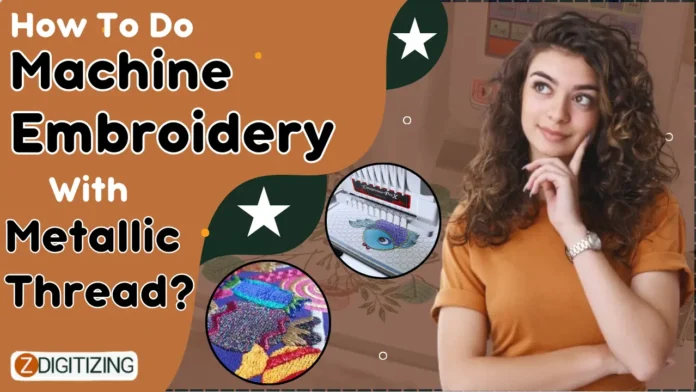Machine embroidery with metallic thread adds a touch of elegance and glamour to any project, but working with metallic thread can pose unique challenges. In this guide, we’ll walk you through the process of machine embroidery with metallic thread, providing tips and techniques to ensure successful stitching. Additionally, we’ll discuss the importance of utilizing digitizing services and embroidery file format converters for optimal results.
Choosing the Right Metallic Thread
Selecting high-quality metallic thread
Opt for high-quality metallic embroidery thread specifically designed for machine embroidery. Quality thread reduces the risk of breakage and fraying during stitching, resulting in smoother and more consistent embroidery.
Consider thread weight and composition
Choose metallic threads with a suitable weight and composition for machine embroidery. Thicker threads may require adjustments to machine settings, while threads with a blend of metallic and polyester or rayon fibers offer improved durability and flexibility.
Preparing Your Machine and Design
Ensure proper tension settings
Adjust the tension settings on your embroidery machine to accommodate metallic thread. Loosening the upper thread tension slightly can help prevent breakage and thread looping during stitching.
Optimize digitized designs
Utilize professional digitizing services to optimize your embroidery designs for metallic thread. Experienced digitizers can adjust stitch density, underlay stitches, and stitch direction to ensure smooth and even stitching with metallic thread.
Use appropriate stabilizers
Select stabilizers that provide adequate support for metallic thread embroidery. Tear-away or cut-away stabilizers are commonly used to prevent puckering and distortion, while water-soluble stabilizers can be used for delicate fabrics or intricate designs.
Handling Metallic Thread During Embroidery
Slow down machine speed
Reduce the embroidery machine speed when working with metallic thread to minimize tension and prevent thread breakage. Slower stitching allows the metallic thread to feed smoothly through the machine without undue stress.
Use a larger needle size
Choose a larger needle size, such as a size 90/14 or 80/12 embroidery needle, to accommodate metallic thread. Larger needles create wider needle holes, reducing friction and preventing shredding or breakage of the metallic thread.
Thread metallic thread carefully
Handle metallic thread with care to avoid tangling and fraying. Thread metallic thread through the machine’s thread path slowly and ensure that it flows freely without catching on any rough edges or burrs.
Troubleshooting Tips
Addressing thread breaks
If metallic thread breaks during embroidery, check for thread tension, needle size, and machine speed. Adjust settings as needed and rethread the machine carefully to resume stitching.
Dealing with thread shredding
If metallic thread shreds or frays during embroidery, try using a larger needle size, reducing machine speed, or applying a thread lubricant to the metallic thread spool.
Conclusion
Machine embroidery with metallic thread adds a touch of luxury and sophistication to any project, but it requires careful preparation and attention to detail. By following the tips and techniques outlined in this guide, you can successfully embroider with metallic thread and create stunning designs that shine and shimmer.
Utilizing professional digitizing services and embroidery file format converter ensures that your designs are optimized for metallic thread embroidery, resulting in flawless stitching and impeccable results. With the right tools and techniques, you can unlock the full potential of metallic thread and take your machine embroidery projects to the next level of elegance and beauty.





